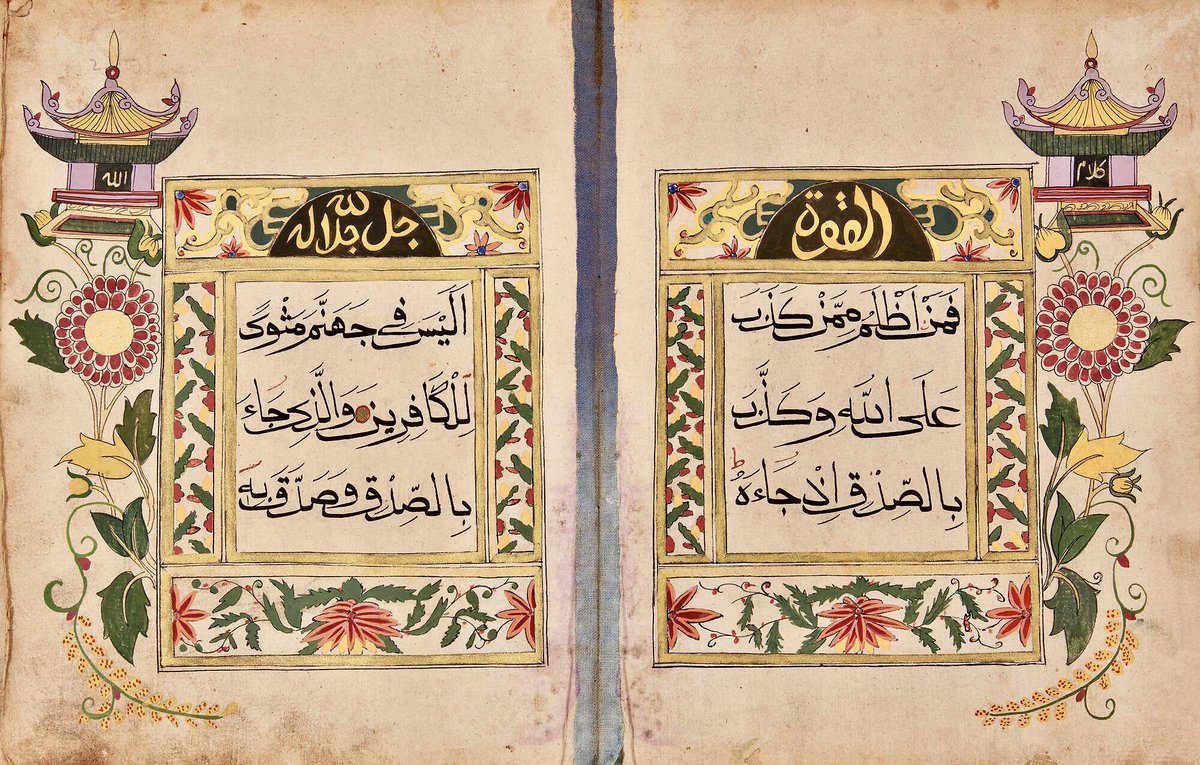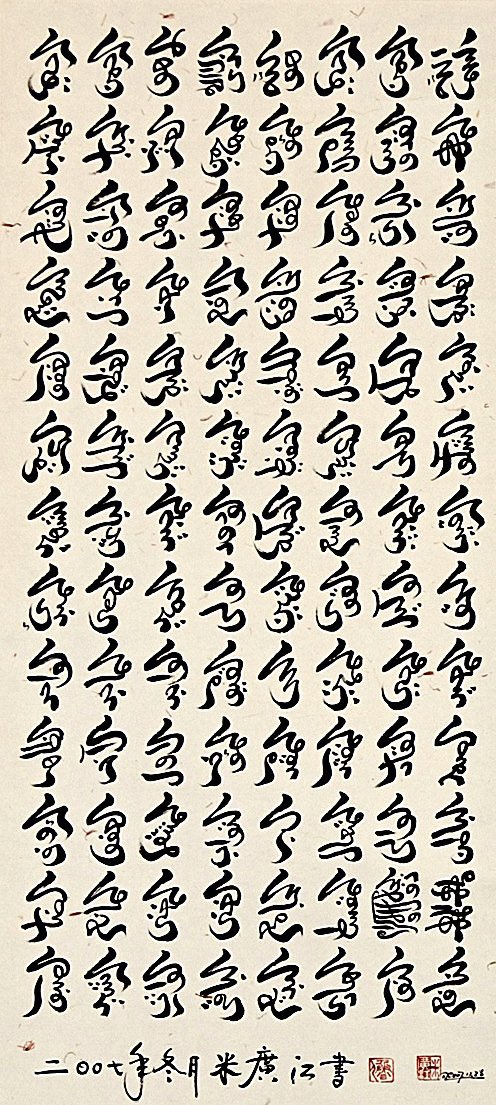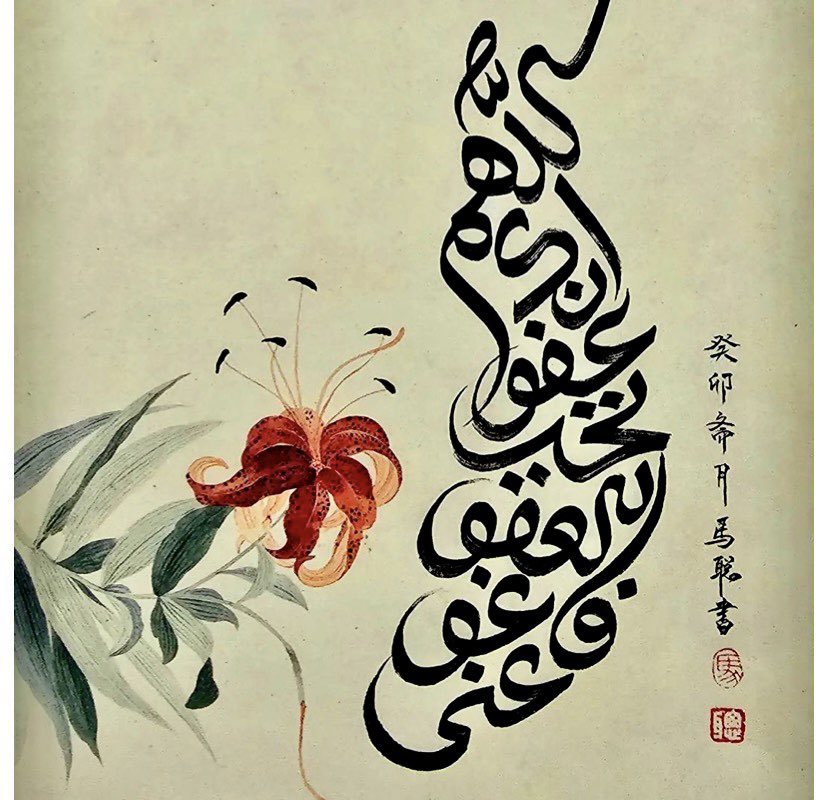Historically China holds calligraphy in high esteem, like in the Islamic tradition. It is seen as one of the highest forms of Chinese art. The way one wrote was as important as what one wrote.
For Chinese Language Day, a thread on Sini Chinese Arabic calligraphy…
For Chinese Language Day, a thread on Sini Chinese Arabic calligraphy…

1/ The history of Chinese calligraphy is as long as that of China. The way one wrote was as important as what one wrote. The art of calligraphy has developed over the centuries as calligraphers have created new innovative techniques
Haji Noor Deen
#ChineseLanguageDay
Haji Noor Deen
#ChineseLanguageDay

2/ Islam was introduced into China as early as 615 AD. Traditional stories claim this was when a group of 4 companions (sahaba) of Prophet Muhammad ﷺ visited China to trade & preach the new faith
Transcendence is Allah
Haji Noor Deen
#ChineseLanguageDay
Transcendence is Allah
Haji Noor Deen
#ChineseLanguageDay

3/ After Islam spread to China, the Chinese Muslims incorporated characteristics of Chinese calligraphy into traditional Arabic calligraphy. Traditional Arabic calligraphy in China is a unique cultural fusion of Chinese culture & Islamic art
Haji Noor Deen
#ChineseLanguageDay
Haji Noor Deen
#ChineseLanguageDay

4/ During the Yuan Dynasty, towards the end of the 14th century, a new style of Arabic script emerged called ‘Sini’ in which Chinese Muslims incorporated their own cultural designs into traditional Arabic calligraphy.
Peace, Haji Noor Deen
#ChineseLanguageDay
Peace, Haji Noor Deen
#ChineseLanguageDay

5/ Sini literally translates from Arabic to 'China' The Sini script is a hybrid style of Arabic script with a distinct Chinese flavour & technique.
19th-century Quran, with Chinese translation. Page opens with Surah 36—Yasin.
(BL IO Islamic 3440, f.13v-14r)
#ChineseLanguageDay
19th-century Quran, with Chinese translation. Page opens with Surah 36—Yasin.
(BL IO Islamic 3440, f.13v-14r)
#ChineseLanguageDay

6/ Sini calligraphy is an Arabic script that has been used by Chinese Muslims in China in mosque invocations, vessel inscriptions, or in hanging scrolls decorating their houses.
Haji Noor deen Mi Guangjiang
#ChineseLanguageDay
Haji Noor deen Mi Guangjiang
#ChineseLanguageDay

7/ A 17th-century Chinese Quran which shows how Islamic styles of calligraphy and illumination were combined with local styles, symbols and aesthetics
@BLAsia_Africa
#ChineseLanguageDay
@BLAsia_Africa
#ChineseLanguageDay

8/ An 18th century Chinese Qur’an - The fluid brushlike strokes of this calligraphic composition are written in the sini script. The folio on the right has the Qur’anic phrase subhan Allah set in a background floral spray
@AgaKhanMuseum
#ChineseLanguageDay
@AgaKhanMuseum
#ChineseLanguageDay

9/ A beautiful example of an 18th century Chinese Qur'an, in Sini script, containing gold Chinese style flowers, opening bifolio with chrysanthemum flowers, pagodas & Chinese style decoration in red, gold, green and lavender
#ChineseLanguageDay
#ChineseLanguageDay

10/ Arabic calligraphy follows a centuries-old tradition involving strict rules. Sini calligraphy, on the other hand, is completely free of rules. The top priority is the beauty & balance of the composition.
Haji Noor deen Mi Guangjiang
#ChineseLanguageDay
Haji Noor deen Mi Guangjiang
#ChineseLanguageDay
11/ The layout of Sini calligraphy often reflects traditional Chinese practice. Sini script is frequently – but not necessarily – written vertically, like Chinese
Haji Noor deen Mi Guangjiang
#ChineseLanguageDay
Haji Noor deen Mi Guangjiang
#ChineseLanguageDay
12/ Haji Noor Deen Mi Guang Jiang is a renowned master of Sini calligraphy. Born in 1963 in Shangdong province, China, he brings an immense learning in traditional thought and Islamic art to a modern audience.
#ChineseLanguageDay
#ChineseLanguageDay

13/ Haji Noor Deen’s work is inspired by calligraphic traditions from China to Istanbul. The artist creates works with expressive lines that at first glance appear Chinese, but on closer inspection go far beyond that.
#ChineseLanguageDay
#ChineseLanguageDay

14/ Haji Noor Deen’s calligraphy skills have given him the honour of being the first Chinese Muslim to receive the Egyptian Certificate of Arabic Calligraphy and to become a member of the Association of Egyptian Calligraphy
#ChineseLanguageDay
#ChineseLanguageDay
15/ ‘Traditional Arabic calligraphy in China is the most representative form of Islamic art in China. The work must be balanced, although individual characters may be of different sizes. There is a unique spirituality to this form of art.’
Haji Noor Deen #ChineseLanguageDay
Haji Noor Deen #ChineseLanguageDay

16/ Calligraphy scroll, displaying the Chinese character 寧 (Ning, peace) composed of Arabic calligraphy giving the Islamic Shahada in the centre with 'b'ism Allah al-Rhaman al-Rahmeem‘above: China, by Haji Noor Deen Mi Guangjiang, c. 2005
@NtlMuseumsScot
#ChineseLanguageDay
@NtlMuseumsScot
#ChineseLanguageDay

18/ Haji Noor Deen is recognised internationally as a Master calligrapher and he has lectured across the world at prestigious universities.
He has a permanent piece ‘The 99 Beautiful Names of God' exhibited in the British Museum
#ChineseLanguageDay
He has a permanent piece ‘The 99 Beautiful Names of God' exhibited in the British Museum
#ChineseLanguageDay

20/ ‘Calligraphy can increase the faith, patience, and also can cultivate one's morality.'
Peace be upon you, Haji Noor Deenr
#ChineseLanguageDay
Peace be upon you, Haji Noor Deenr
#ChineseLanguageDay

• • •
Missing some Tweet in this thread? You can try to
force a refresh
























